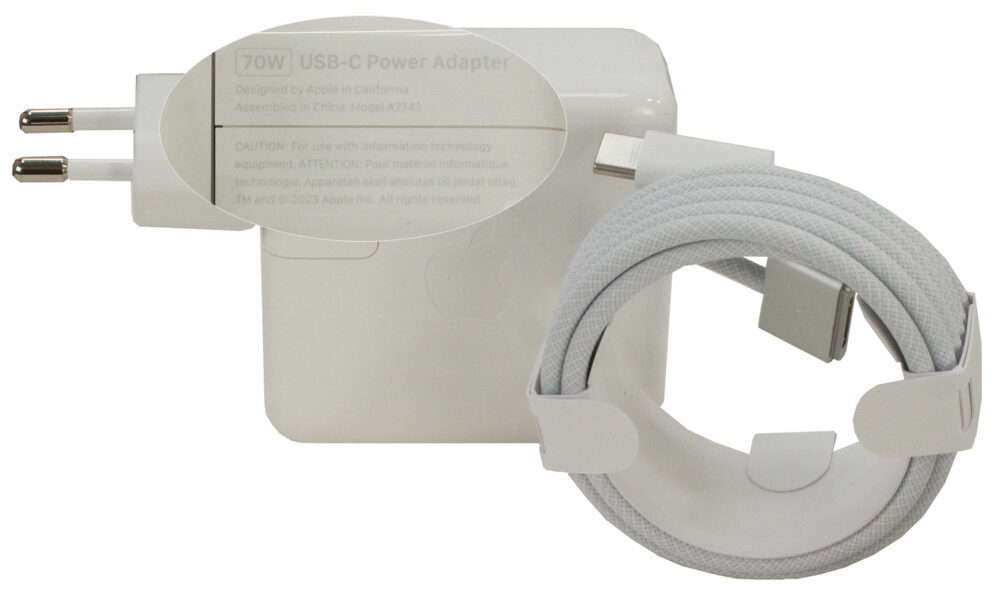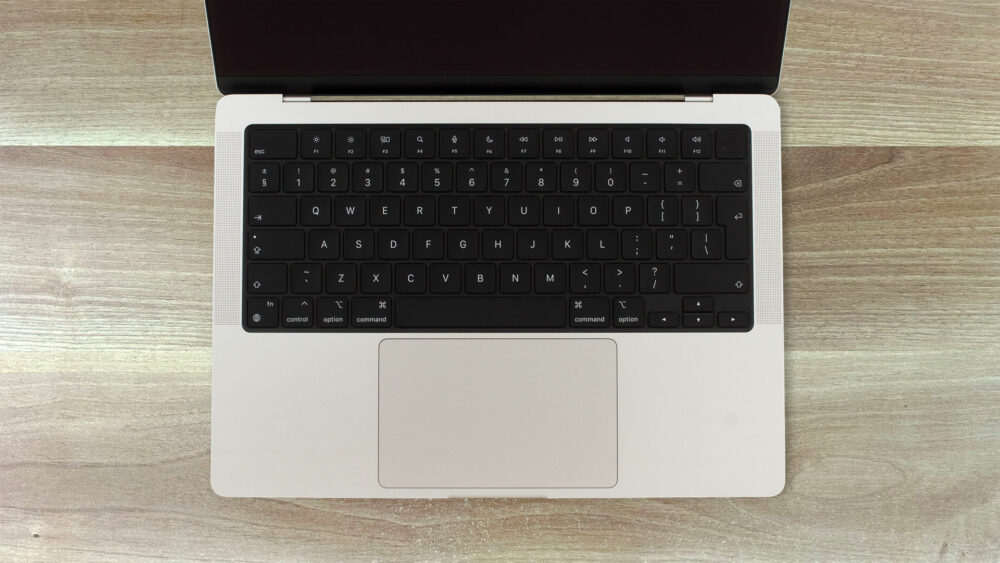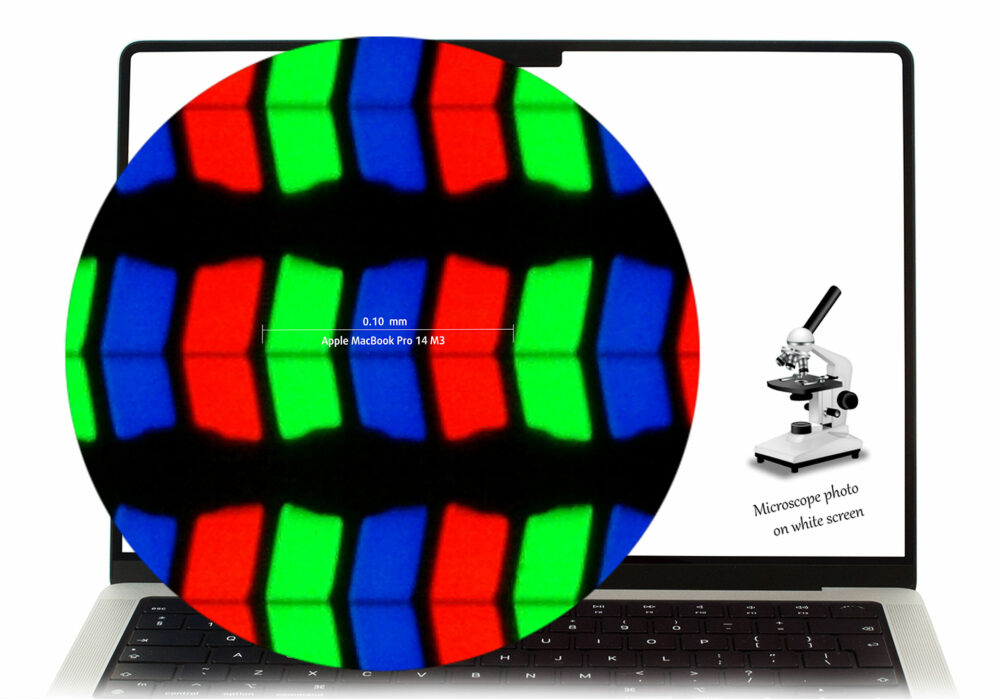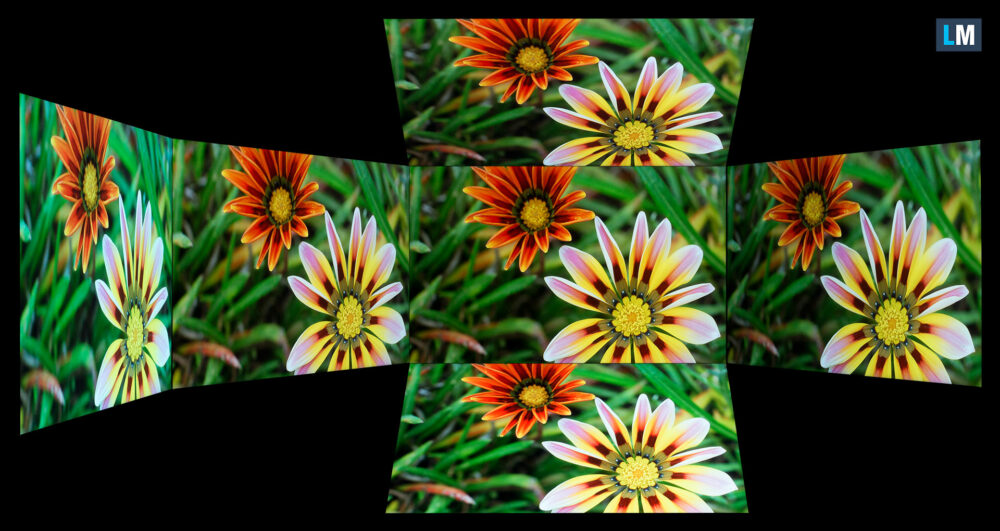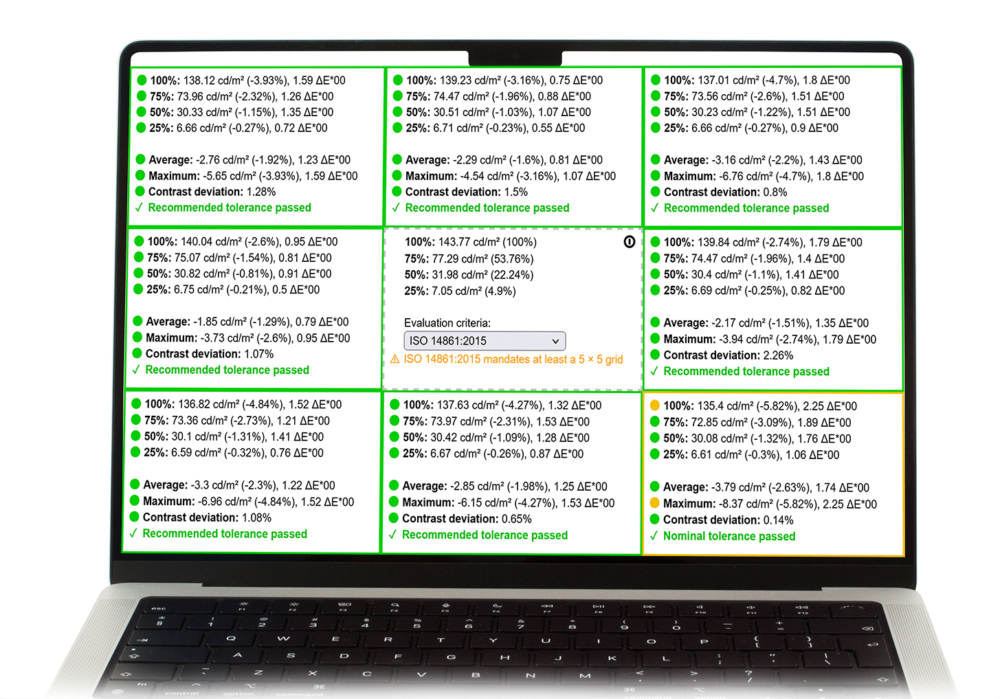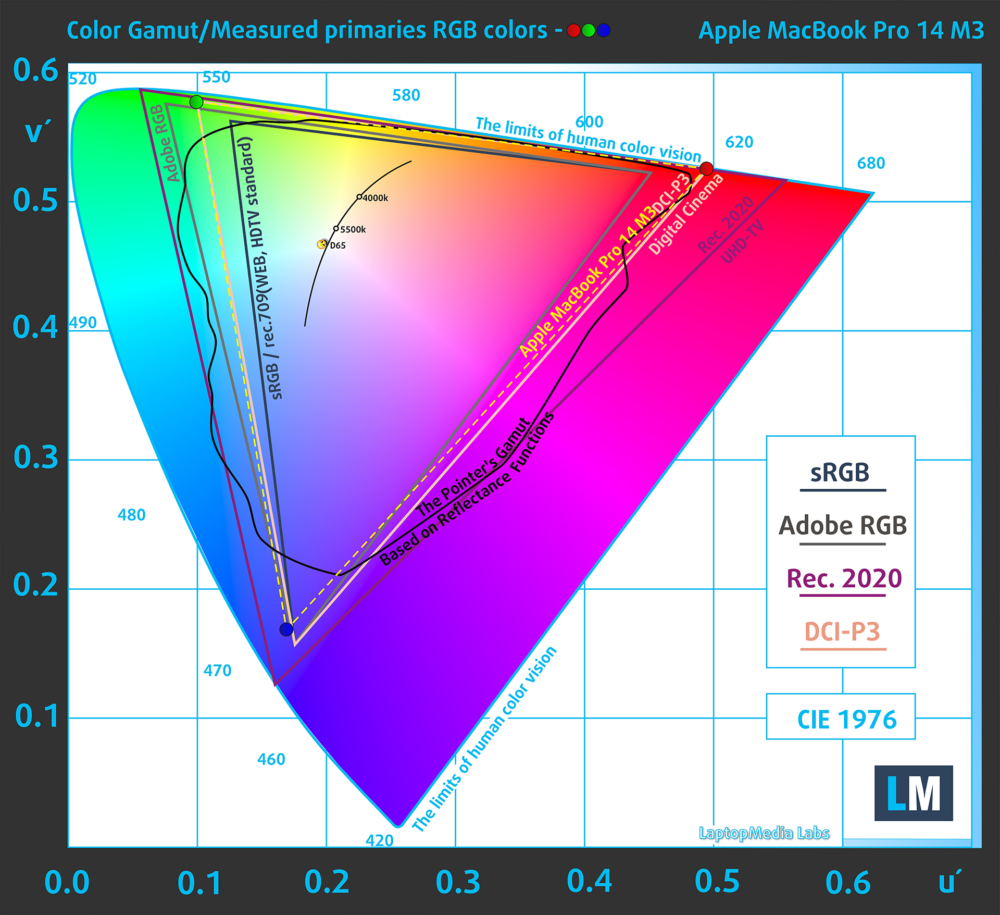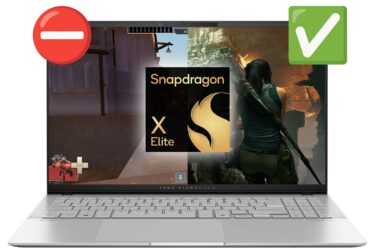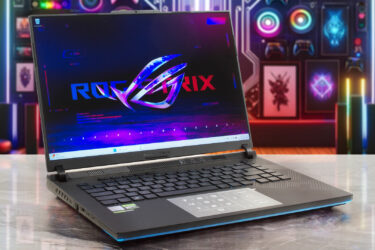Apple MacBook Pro (14-inch, M3) vs Dell XPS 14 9440: An In-Depth Head-to-Head Clash
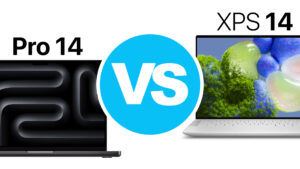 The jump from the 13-inch MacBook Air to the 14-inch MacBook Pro might seem small on paper, however, you do get a real notebook for professionals. For the $300 price increase, you receive active cooling, a better display, and a more varied port selection, which really improves the performance of the notebook in serious workloads.
The jump from the 13-inch MacBook Air to the 14-inch MacBook Pro might seem small on paper, however, you do get a real notebook for professionals. For the $300 price increase, you receive active cooling, a better display, and a more varied port selection, which really improves the performance of the notebook in serious workloads.
The MacBook Pro and its M3 chip are ready to take on all Windows-based laptops that compete with them, and today we have a real challenger, coming from Dell’s XPS series, which has always presented probable machines with plenty of performance for any task at hand. The newest to come through our lab is the Dell XPS 14 9440, packing high-end Intel Core Ultra CPUs, as well as dedicated NVIDIA graphics (sadly the only available model that we could buy came with integrated Arc Graphics).
However, that’s not gonna stop us from comparing these two machines, so you know what device to choose if you’re a productive person and need as much performance and features as possible on the go.
Apple MacBook Pro (M3) 14″: Specs Sheet / In-depth Review
Dell XPS 14 9440: Specs Sheet / In-depth Review
Apple MacBook Pro (M3) 14″ configurations:
Dell XPS 14 9440 configurations:
Specs table
The 14-inch MacBook Pro is divided into two tiers. The base M3 variant that we have today with the exclusive Space Grey color and the M3 Pro and M3 Max models that come with a bigger battery, are heavier, come with the exclusive Space Black color, and have a steeper price. Since the M3 MacBook Pro is closer in price to the Dell XPS 14 9440, we decided to pick it for the comparison.
| Specification | Apple MacBook Pro (M3) 14″ | Dell XPS 14 9440 |
|---|---|---|
| Operating System | Mac OS X | Windows 11 Pro, Windows 11 Home |
| Processor | Apple M3 (8-core CPU) Apple M3 Pro (11 or 12-core CPU) Apple M3 Max (14 or 16-core CPU) | Intel Core Ultra 7 165H Intel Core Ultra 7 155H |
| GPU | Apple M3 GPU (10-core) Apple M3 GPU (14-core) Apple M3 GPU (18-core) Apple M3 GPU (30-core) Apple M3 GPU (40-core) | NVIDIA GeForce RTX 4050 (Laptop) Intel Arc (8-cores) |
| Display | 14.2″, MiniLED XDR (3024 x 1964), 120Hz | 14.5″, FHD+ (1920 x 1200), 120 Hz, IPS 14.5”, 3.2K (3200 x 2000), 120Hz, OLED |
| Memory | up to 128GB Unified Memory | up to 64GB LPDDR5x RAM |
| Storage | up to 8000GB SSD | up to 4000GB SSD |
| Battery | 70Wh | 70Wh |
| Weight | 3.4 lbs (1.55 kg) | 3.7 lbs (1.68 kg) |
| Dimensions | 12.31″ x 8.71″ x 0.61″ (312.6 x 221.2 x 15.5 mm) | 12.60″ x 8.50″ x 0.26″ (320 x 215.98 x 6.70 – 18.03 mm) |
| Ports |
|
|
Unboxing
Both laptops come in fancy boxes, however, the chargers that come with them are more important. Usually, with the MacBook Air, you have to pay extra to get the 70W fast charger. With the MacBook Pro, you get it included in the box, as well as a braided Type-C to MagSafe cable. You can also choose a 96W charger, however, fast charging can be damaging to the battery in the long run.
On the Dell XPS 14 9440, you get two options, a 60W adapter or a 100W adapter, depending on whether you buy the laptop with integrated Intel graphics or dedicated NVIDIA graphics. Since we have the model with the integrated Intel Arc Graphics, we have the 60W charger. Inside the box, there’s also a USB-C to USB-A 3.0 & HDMI 2.0 adapter.
Design and Construction
MacBooks have always been well-crafted and with some interesting design choices. The 14-inch Pro model features a fully aluminum chassis with a glass-covered screen. All of these robust materials mean 0 flex, especially when the laptop is closed shut. The notch is an interesting design choice, especially once you figure out that there’s no Face ID. Instead, there’s just a 1080p FaceTime camera. The MacBook weighs 3.4 lbs (1.55 kg), which is 130 grams lighter than the XPS 14, and has a profile of 0.61 inches (15.5 mm).
The Dell XPS 14 9440 brings a similar CNC aluminum construction (a unibody) that’s super durable, with no flex when we try to twist it. It’s only 0.26 inches (6.70 mm) thin at the front, going to 0.70 inches (18.03 mm) thin at the back. The weight is manageable at 3.7 lbs (1.68 kg). It doesn’t need a notch, despite having the better camera setup, with a Full HD webcam + an IR sensor for facial recognition. The screen is protected by Gorilla Glass 3, offering extra protection from scratches, a premium glossy finish, and added durability.
| Apple MacBook Pro (M3) 14″ | Dell XPS 14 9440 | |
|---|---|---|
| Weight | 3.4 lbs (1.55 kg) | 3.7 lbs (1.68 kg) |
| Dimensions | 12.31″ x 8.71″ x 0.61″ (312.6 x 221.2 x 15.5 mm) | 12.60″ x 8.50″ x 0.26 – 0.70″ (320 x 215.98 x 6.70 – 18.03 mm) |
Keyboard and touchpad
The MacBook Pro utilizes the space on its base quite well, with two speaker grills flanking the keyboard. The keyboard also has a Touch ID sensor integrated into the power button. The keys are tactile, with decent travel, so typing feels satisfying and comfortable. The backlight is bright and every key is illuminated evenly, which is always good to see. The touchpad is a thing of beauty, as the surface is super smooth, while the accuracy just can’t be put into words. It’s just that good.
Transitioning to the XPS 14, here we also have speakers flanking the keyboard, as well as Dell’s new keyboard design. There’s no frame between the keys and rectangular sharp keycaps. Typing is great, thanks to the long key travel and clicky feedback. There’s a Copilot key, as Microsoft is looking to integrate it further into Windows.
The space above the board is covered in glass and has capacitive buttons that can change (even the icons) between Media keys and Function keys (you can switch between them by holding the Fn key). The bottom portion is covered in glass too. You might think the entire area is a touchpad, but the realistic borders are between the Space and Copilot keys. It has the exact dimensions of 149 mm x 74 mm. Thanks to the glass, it’s super smooth, however, finding it is always a bit difficult (you’ll get used to it eventually).
Ports
The 14-inch MacBook Pro offers the better port selection, with two Type-C ports, an HDMI port, an SD card reader, an audio jack, and a MagSafe charging connector.
The Dell XPS 14 9440 brings three Thunderbolt 4 ports, a MicroSD card reader, and an audio jack. The Thunderbolt 4 ports can be used for charging, as well as outputting a DisplayPort signal.
Display and Sound Quality
The MacBook Pro is equipped with a 14.2 inch (36.1 cm) 3024 x 1964p 16:10 Mini LED panel that Apple calls Liquid Retina XDR (Extreme Dynamic Range). MiniLED panels utilize local dimming zones for backlighting, which means higher brightness and contrast, as well as deeper blacks. The panel here has a 120Hz refresh rate, making the laptop feel smoother. The pixel density is quite high, at 254 PPI, with a pitch of 0.1 x 0.1 mm, and a Retina distance of 14.17 inches (36cm).
We have the base spec screen on the XPS 14, which is a 14.5-inch (36.8 cm) 1920 x 1200p 16:10 IPS screen. It also brings a 120Hz refresh rate, but a lower pixel density of 156 PPI, a pitch of 0.16 x 0.16 mm, and a Retina distance of 22 inches (56cm). From this distance, the human eye can’t distinguish between individual pixels.
Both displays have really good viewing angles, as you can see from the images below, which are taken at different angles.
The maximum brightness of the MacBook Pro measures at 604 nits in the middle of the screen and 589 nits average across the surface with a maximum deviation of 4%. (this is the difference between the brightest point of the screen and the average, lower means better). The color temperature at peak brightness on a white screen is 6540K („True Tone“ – Off). The contrast ratio is unbelievably high, at 4900:1.
On the XPS 14, we have a max brightness of 492 nits in the middle of the screen and 469 nits average across the surface with a maximum deviation of 7%. The contrast ratio is lower, but still really good for an IPS panel, at 2100:1.
Color coverage
Here are some illustrations (Fig. 1) & (Fig. 2). The whole “sail-shaped” map below consists of all the colors we can see, while the black crooked line shows all the colors from real-world scenes and nature around us.
Then, we’ve drawn some of the most important and interesting color spaces, compared to the colors that the panels of the laptops can display:
Standard/For Web: sRGB – widely used color space for most consumer devices, ideal for Web design and development
For Print: AdobeRGB – used in professional photo editing, graphic design, and print
For Photographers/Video Editors: DCI-P3 – used in high-end film production, post-production, and digital cinema
Premium HDR: Rec.2020 – the widest consumer ITU color standard, covering a massive 75.8% of the visible spectrum, a benchmark for premium HDR content
The yellow dotted line shows the color coverage of both the Apple MacBook Pro (M3) 14″ and the Dell XPS 14 9440.
| Apple MacBook Pro (M3) 14″ | Dell XPS 14 9440 | |
|---|---|---|
| sRGB coverage | 99% | 95% |
| DCI-P3 coverage | 97% | 76% |
PWM – Pulse Width Modulation
PWM, also known as flickering, is a way for displays to adjust brightness, by constantly flickering very quickly, thus reducing the overall light that your eyes perceive. The problem comes when the frequency of the flickering is low, where your eyes constantly have to shift their pupils, tiring quicker and causing headaches. You can learn more about PWM here.
The MacBook Pro uses PWM at all levels, and while the frequency is high, the brightness of the light is super high, above 4000 nits.
The Dell XPS 14 9440’s backlight uses 0 PWM, resulting in a safe long-term use.
Sound
Both speaker setups show no deviations from clarity across the entire frequency range. Furthermore, the audio that comes off is clear, loud, and of good quality.
Performance – CPU, GPU
This configuration of MacBook Pro is outfitted with an M3 SoC, which includes an 8-core CPU, and a 10-core GPU. As for the XPS 14, you can choose between the Core Ultra 7 155H and the Ultra 7 165H, two 16-core, 22-thread CPUs. In terms of graphics, the configuration that we bought has an Ultra 7 155H with its integrated 8-core Intel Arc GPU.
CPU tests
In the Cinebench R23 benchmark, the Core Ultra 7 CPU is 41% faster than the M3, as all 16 cores do a better job when ramped up.
Results are from the Cinebench R23 CPU test (the higher the score, the better)
However, comparing a core vs core, aka the Geekbench 6 Single-core score, the M3 has a 33% higher score. In the Multi-core score, where all cores are working, the XPS 14 has a 7% higher score.
| Laptop Model | Geekbench 6: Single / Multi score |
|---|---|
| Apple MacBook Pro (M3) 14″ | 3135 / 12042 |
| Dell XPS 13 9340 | 2349 / 12941 |
GPU tests
The 10-core Apple M3 GPU is much quicker than the Intel Arc 8-core GPU, as the MacBook Pro generates a 31% higher score in the 3DMark Wild Life benchmark.
Results are from the 3DMark: Wild Life benchmark (higher the score, the better)
Temperatures, Comfort, Battery life
You can see the difference once the M3 is paired with an active cooling solution. While the temperatures are still high, the clock speeds are high too, as well as being consistent.
The XPS 14 does a great job too, maintaining a high power limit through short and medium loads, while the long-run performance is good too, especially for a 14-inch machine.
| 0:02 – 0:10 sec | 0:15 – 0:30 sec | 10:00 – 15:00 min | |
|---|---|---|---|
| Apple MacBook Pro (M3) 14″ | 3.64 GHz @ 2.75 GHz @ 84°C @ 20.34W | 3.64 GHz @ 2.75 GHz @ 98°C @ 20.61W | 3.64 GHz @ 2.75 GHz @ 100°C @ 21.12W |
| Dell XPS 14 9440 | 3.01 GHz @ 2.55 GHz @ 1.81 GHz @ 88°C @ 64W | 1.96 GHz @ 2.53 GHz @ 2.22 GHz @ 96°C @ 58W | 2.17 GHz @ 1.88 GHz @ 1.33 GHz @ 83°C @ 38W |
Battery
We never thought we’d see the day when a MacBook outright loses a battery comparison, but today’s that day. The Dell XPS 14 is the longer-lasting notebook of the two, with 25 hours of web browsing and 20 hours of video playback, which is 8 hours and 20 minutes more web browsing and 5 hours and 43 minutes more video playback than the MacBook Pro.
For every test like this, we use the same video in HD.
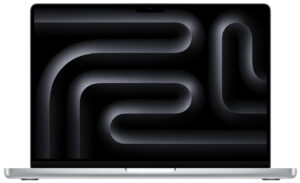
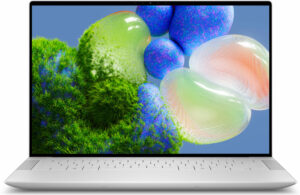
In order to simulate real-life conditions, we used our own script for automatic web browsing through over 70 websites.


Disassembly and upgrades
Due to the nature of the M3 SoC, the MacBook Pro offers n0 upgradeability.
On the other hand, the XPS 14 has a single SSD slot for PCIe Gen 4 drives. It fits either 2280 or 2230 drives, as there’s a special SSD bracket that doesn’t allow other SSD sizes.
Verdict
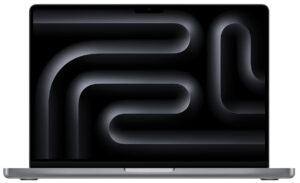 The MacBook Pro is a fantastic laptop if you want to keep living in the Apple ecosystem and are already surrounded by Apple devices, as the display that it offers is phenomenal for content creation. It does however have its negatives, like the PWM usage. On the other hand, if you want a fresh take on a laptop within the more liberal Windows ecosystem, you have to consider the Dell XPS 14 9440, which brings more performance than the base M3 MacBook and has a longer-lasting battery.
The MacBook Pro is a fantastic laptop if you want to keep living in the Apple ecosystem and are already surrounded by Apple devices, as the display that it offers is phenomenal for content creation. It does however have its negatives, like the PWM usage. On the other hand, if you want a fresh take on a laptop within the more liberal Windows ecosystem, you have to consider the Dell XPS 14 9440, which brings more performance than the base M3 MacBook and has a longer-lasting battery. 
Also keep in mind that the MacBook is the less expensive option of the two, which must be considered when deciding between the two. However, keep in mind that this isn’t even the peak that the MacBook Pro can reach, as the M3 Pro and M3 Max variants would probably mop the floor with the XPS 14, with more CPU and GPU cores. That doesn’t mean you’ll be free of the MacBook’s problems, like the PWM on the display and the lack of upgrade options.
The XPS 14 can also get more powerful by adding the RTX 4050, as well as the more powerful Ultra 7 165H.
Why choose the Apple MacBook Pro (M3) 14″?
- The more affordable of the two
- Lighter chassis
- Wider port selection
- The display covers a lot more colors, is much brighter, and has higher contrast.
- More powerful GPU (when compared to the Intel iGPU)
Why choose the Dell XPS 14 9440?
- More powerful CPU
- Upgradeable storage
- Battery lasts for longer
- The display doesn’t use PWM at all
Apple MacBook Pro (M3) 14″: Specs Sheet / In-depth Review
Dell XPS 14 9440: Specs Sheet / In-depth Review
All Apple MacBook Pro (M3) 14″ configurations:
All Dell XPS 14 9440 configurations:
